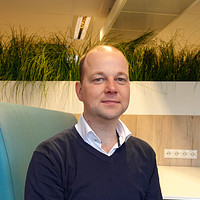To improve productivity in smart industry, devices are increasingly equipped with vision systems for pick-and-place applications, quality checks, object localizations and object recognition.
background information
Since the end of the last century, machine vision systems have been used to take over visual tasks from people who perform work on the assembly line. However, since the beginning of this century, machine vision systems have been increasingly used to extract more detailed information from much more complex situations, using computer vision algorithms. The majority of automated production systems are nowadays no longer supplied without a machine vision system.
project approach
Vision systems are extremely sensitive to unpredictable changes in the environment, such as lighting, shading, orientation of products and optical variations in, for example, natural products. In such cases, the vision system does not recognize products / objects and a vision specialist must evaluate the new situation, recalibrate the system and reprogram the software. A good knowledge base of the possibilities and limitations of vision systems is essential in order to be able to make the right decisions in the development process of machines and robotic systems.
- How does light react to different materials (scattering, absorption, transmission)?
- Which color of light can I best apply (visible, infrared, UV)?
- Which cameras and lenses are suitable (2D, 3D cameras)?
- Which algorithms should I use to create a filter an object from a picture (computer vision algorithms, artificial intelligence)?
The vision problem is therefore in fact a search (via, for example, a morphological roadmap) for the best combination of vision building blocks (lighting, optics, and software) in which these technologies must be coordinated so that they can be used reliably and economically profitably.
research outcome
Voortman Steel Machinery BV has been designing, developing and manufacturing machines for the steel construction and plate processing industry for over 50 years. The fellow company Voortman Steel Construction uses these machines for the realization of steel constructions in non-residential construction, industrial construction, system construction, renovation and supply. To improve their position in the steel market, Voortman wants to equip a large number of their standard machines with vision systems to be able to measure, follow, identify, etc. their steel products without contact. However, a solid foundation with vision knowledge is currently limited at the company, resulting in unnecessarily long quotation and development processes. The goal of Voortman in this project is therefore also to be able to build a broad knowledge base of vision for their employees so that they can apply it in the development of the steel processing machines and Saxion has approached the Mechatronics Research Group to develop and apply this vision knowledge together via applied research.
Duration project
Start project: 01-12-2020 - End project: 30-11-2022
Partners


Voortman Steel Construction
Stagepartnerdag Bouwkunde, Bouwtechnische Bedrijfskunde en BK5
www.voortman.net/nl
Tech for Future
websiteMore information about the project?
